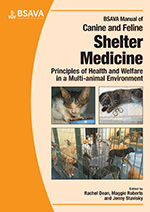
Full text loading...

Feline infectious peritonitis is a serious and fatal disease that arises as a consequence of infection with feline coronavirus. This chapter covers presentation and clinical signs, diagnostic testing, differential diagnoses, treatment, prevention and management following confirmation of feline infectious peritonitis in a shelter. Quick reference guide: Toxoplasmosis.
Managing feline coronavirus and feline infectious peritonitis in the multi-cat/shelter environment, Page 1 of 1
< Previous page | Next page > /docserver/preview/fulltext/10.22233/9781910443330/9781910443330.18-1.gif

Full text loading...









